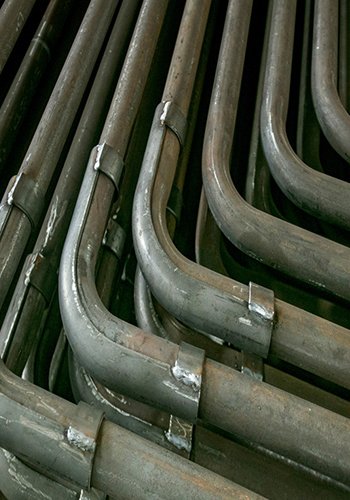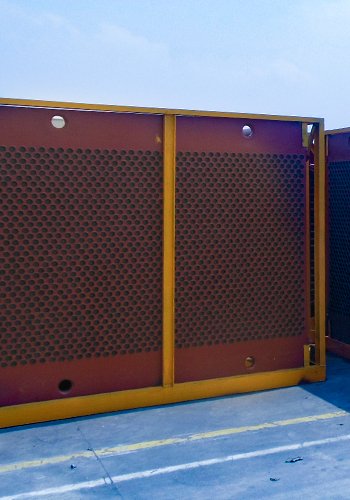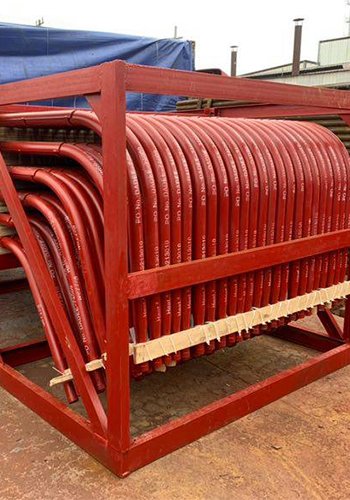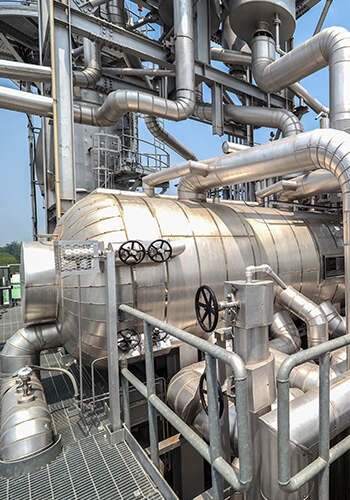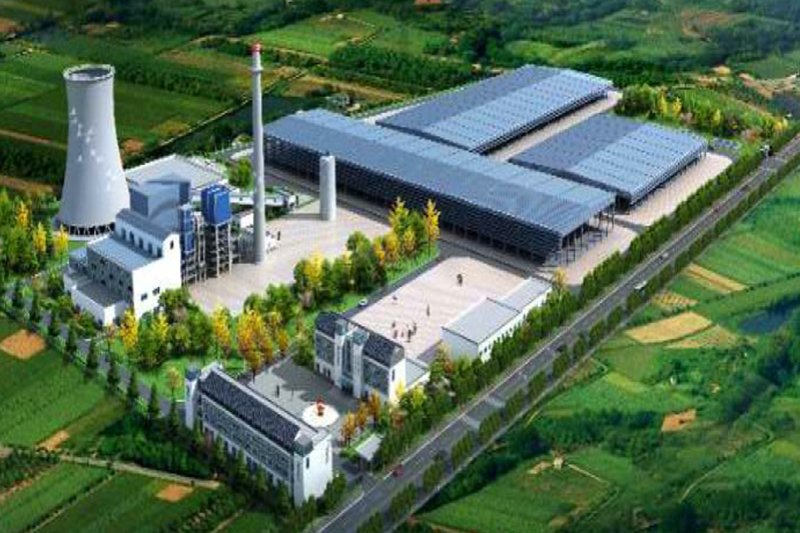Combusting fuel in a CFB Boiler happens in a state where the fuel is fluidized. It’s quite a complex system, with multiple variables all intertwined and affecting each other. On top of that, there’s the intricate process of how fly ash cycles into the combustion. This makes it tough to achieve the desired control outcomes using conventional methods or human intervention alone.
Now, considering these challenges, developing an optimization control system for CFB Boiler combustion characteristics is crucial. It plays a pivotal role in ensuring the economic and safe operation of CFB Boilers.
When it comes to constructing a boiler optimization control system, the unique characteristics of CFB Boiler circulating fluidized combustion technology must be considered. This technology offers a wide range of fuel options and boasts high combustion efficiency. However, in comparison to other boiler types like pulverized coal furnaces, CFB Boilers come with a more intricate network of control circuits and systems. Consequently, achieving effective automatic control for CFB Boilers is a multifaceted challenge. It requires not only maintaining stable main steam pressure but also ensuring the boiler’s economic and safe operation. Additionally, control over bed temperature, circulating ash, and material layer height is essential.
Typically, most boiler automation control systems rely on a DCS (Distributed Control System). While DCS systems are highly automated, the control of CFB Boilers involves numerous interdependent variables. These factors can pose a significant challenge to a standalone DCS control system’s ability to maintain stable and reliable operation. Therefore, there is a pressing need for a more comprehensive and optimized control solution to address these inherent control complexities and deficiencies.
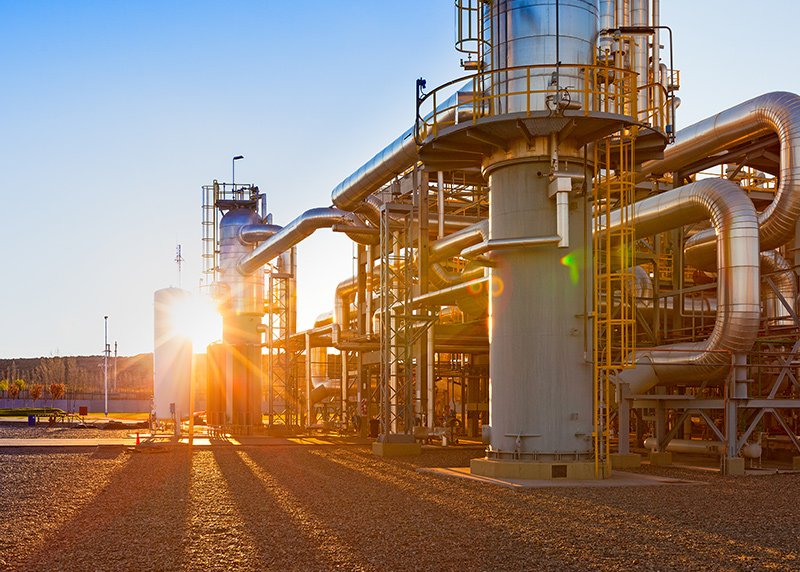
CFB Boiler process
In the CFB Boiler’s combustion process, we’re dealing with a circulating fluidized bed combustion technology. Here’s how it all works:
Fuel Feeding: To kickstart the combustion process, we use a coal feeder that sends coal down a drop tube into the furnace.
Air Supply: For the combustion to happen, the boiler needs air. This air is provided by two fans: the primary fan and the secondary fan.
Primary Air: The air from the primary fan is first preheated by the primary air preheater. Then, it’s directed to the water-cooled air chamber under the furnace via ducts on the left and right sides. From there, it enters the combustion chamber through multiple air caps on the water-cooled fabric plate.
Secondary Air: Meanwhile, the air from the secondary fan undergoes preheating from the secondary air preheater. It’s then sprayed into the furnace chamber through nozzles on the front and back walls. This secondary air serves to enhance turbulence and mixing in the combustion process.
Combustion: Inside the furnace chamber, fuel and air mix and burn in a fluidized state. At the same time, they exchange heat with the heated surfaces. In the lower part of the furnace, there’s a substantial amount of unburned carbon particles in the flue gas. These particles are further combusted in the upper part of the furnace, releasing more heat.
Flue Gas Treatment: When the flue gas leaves the furnace, it carries a significant amount of material with it. This gas passes through a snail shell-type air-cooled cyclone separator, where unburned material is separated out. This material is then recycled back into the furnace through the reclaimer, completing the combustion cycle of the boiler.
Emission Control: The separated flue gas exits the tail flue and goes through several components like the steering room, high and low-temperature superheaters, coal economizer, primary air preheater, and secondary air preheater. Afterward, it passes through an electric dedusting system and a desulfurization system for dust removal and desulfurization. Finally, the clean, compliant flue gas is released through the chimney.
It’s worth noting that due to the circulating fluidized bed combustion method, adding limestone to the furnace can significantly reduce sulfur dioxide emissions in the flue gas. Additionally, utilizing air grading air supply and low-temperature combustion technology effectively suppresses the generation of nitrogen oxides. This advanced technology contributes to cleaner and more efficient combustion in CFB Boilers.
CFB Boiler optimization control system
The CFB Boiler optimization control system relies on specialized software known as APC (Advanced Process Control) software. This software is specifically designed for optimizing boiler control, and it achieves the design and fine-tuning of the multivariate combustion optimization loops through the PCO (Process Control Optimization) advanced control platform.
The APC software package for boilers comprises several crucial components:
1. PCO Boiler Advanced Control Software: This software is at the core of the system. It’s responsible for advanced control strategies based on the boiler’s process mechanism.
2. Boiler System Performance Calculation Software: This module allows for real-time, online evaluation of the boiler’s operational efficiency and control optimization effects.
3. Lower Computer DCS Monitoring System: This handles control switching logic and safety protection.
The advanced process control software employs intelligent optimization and control strategies, including predictive control, expert control, and professional advanced process model identification. It’s worth noting that this software package not only optimizes control but also provides online assessment capabilities, making it a comprehensive tool for optimizing CFB Boiler operation.
The automatic control system for multivariable combustion optimization in CFB Boilers covers several key aspects:
– Automatic Fuel Feeding
– Automatic Primary and Secondary Air Feeding and Proportioning
– Automatic Induced Draft Feeding
– Automatic Bed Differential Pressure Slag Discharge
The parameters related to automatic control encompass various critical factors such as boiler heat load, primary air volume, secondary air volume, furnace temperature, negative furnace pressure, flue gas oxygen content, bed temperature, and bed differential pressure.
To understand the main principles of multivariable combustion optimization control for CFB Boilers:
– Heat Flux Control: The heat flux from the furnace bed is directly linked to the amount of fuel in the bed. By adjusting the ratio of primary and secondary air, the heat flux can be controlled, helping to stabilize the fuel in the bed, which is fundamental for combustion control.
– Multivariable Control Model: This model revolves around the concept of a “heat storage pool” within the CFB Boiler. It uses signals from bed temperature to make adjustments. Within the rated design constraints of each operational parameter, it manipulates airflow, material concentration, and other factors to quickly stabilize changes in the boiler’s heat load.
– Stabilization of Key Parameters: The control system maintains stability by quickly adjusting the coal feed rate through the wind-coal ratio, alongside bed temperature adjustments. It also optimizes oxygen content for efficiency and adjusts negative pressure based on airflow feedforward and furnace chamber pressure signals. Additionally, it keeps slagging under control by automatically adjusting slag discharge to correspond with the optimal bed pressure for different loads.
In essence, the CFB Boiler optimization control system combines advanced software, intelligent control strategies, and a deep understanding of the combustion process to ensure efficient and stable operation.

Boiler optimization control system construction
1 Boiler Optimization Control System Construction
Our journey with Gulf Chemical’s boiler optimization control system began on November 22, 2018, and reached a significant milestone on December 16th when it entered the continuous operation and stability preservation phase. After a month of meticulously preserving system stability and optimizing parameters, our boiler optimization control system proved its mettle. It exhibited the capacity for long-term, uninterrupted operation and the ability to swiftly respond to substantial fluctuations in external loads. This translated to a notable reduction in the fluctuation amplitude of process indicators compared to manual operation. The system’s smoothness vastly improved, yielding highly effective automatic control with an impressive commissioning success rate exceeding 90%.
2 Realization Method of Boiler Optimization Control System
CFB Boiler combustion, being a typical multi-variable coupling process, poses a considerable challenge for control through traditional PID algorithms alone. To achieve effective automatic control, we introduced advanced control concepts, specifically fuzzy control, into the CFB Boiler combustion control system. Extensive practice has shown that fuzzy control is well-suited for managing nonlinear, time-varying, and complex systems.
Our approach involved integrating fuzzy control with conventional PID control, forming a comprehensive control scheme. This scheme, combined with various feed-forward control strategies, was then applied to the complex CFB Boiler combustion system. The key to success lies in understanding the relationships between various variables, such as coal, load, and bed temperature. Fuzzy control, in conjunction with DCS (Distributed Control System) functionality, allowed us to achieve optimal combustion control. Fuzzy control mimics human experience through control algorithms and fine-tunes these algorithms through theoretical calculations. Ultimately, this approach, integrated with the DCS, realizes automatic control effectively.
3 Commissioning of Boiler Optimization Control System Loops
Several automatic control loops were put into operation as part of the boiler optimization control system:
(1) Tank Liquid Level Optimization Control: This control loop ensures stable control of turbine liquid levels by automatically adjusting the main water supply valve.
(2) Main Steam Temperature Optimization Control: Stability in main steam temperature is achieved through automatic adjustments of the desuperheating water valve.
(3) Boiler Load and Coal Feed Optimization Control: This control loop utilizes heat calculation, considering factors such as furnace outlet temperature and ash concentration, to stabilize boiler load through automated coal feeding and appropriate air distribution.
(4) Optimized Control of Secondary Air: This control loop stabilizes and controls oxygen content in the flue gas through the adjustment of secondary air.
(5) Bed Temperature – Primary Air Optimization Control: Bed temperature stability is maintained through primary air adjustments, with correction and coordination based on coal feed and secondary air ratios.
(6) Optimized Control of Furnace Negative Pressure: Furnace chamber negative pressure is controlled through induced draft adjustments, factoring in primary and secondary air feed-forward.
(7) Bed Pressure Differential – Material Layer Thickness (Slagging) Control: Differential bed pressure, which characterizes material layer thickness in the dense-phase area, is controlled by automatically adjusting the slag discharge mechanism.
Our system is operating under normal conditions, demonstrating excellent equipment performance and achieving continuous automatic operation across all indicators. It adapts seamlessly to changes in coal quality and tracks load variations efficiently. Through self-optimization, our boiler optimization control system maximizes combustion efficiency, aligning with our project goals for Gulf Chemical.
Effect of Boiler Optimization Control System
(1) Comparison of Control Parameters Before and After Commissioning
The boiler serves several downstream users, including chlor-alkali, vinyl chloride, PVC, and styrene plants, with PVC production characterized by frequent load fluctuations, varying between 10 to 20 tonnes. Manually managing the boiler under these conditions proves challenging due to its substantial load fluctuations.
However, the implementation of the boiler APC advanced control system has brought about a remarkable transformation. The comparison of system performance before and after commissioning reveals a significant enhancement in boiler system stability. The control outcomes are highly favorable, with an impressive automatic commissioning rate exceeding 90%. On average, the fluctuation amplitude of each process indicator has decreased by over 30% compared to manual operation. The overall smoothness of process indicators has improved dramatically.
Since the transition to continuous operation, the boiler APC advanced control system has performed seamlessly, maintaining stable control and consistently smooth parameters. Over this period, the system has only been manually removed twice, both times initiated by operators. The cumulative duration of removal for combustion-related systems (main steam pressure, flue gas content, furnace negative pressure, bed temperature) totaled just 22 minutes. These instances occurred due to concerns about the secondary air volume lower limit and boiler load fluctuations. However, the system remained controllable within its limits, negating the need for removal. In practice, the system has proven robust and adaptable.
(2) Analysis of Energy Savings, Consumption Reduction, and Operational Optimization Benefits
The implementation of the boiler optimization control system has yielded several significant benefits:
Energy Savings: The system enables fully automatic boiler combustion and steam control. This high degree of automation has reduced the frequency and intensity of operator interventions. Consequently, operators can focus more on inspecting on-site equipment and critical process control parameters. Through various combustion optimization strategies, including low oxygen combustion and optimized air ratios, the system has enhanced heat and mass transfer within the furnace. This has effectively improved combustion conditions, resulting in reduced exhaust temperatures. Under the same load conditions, exhaust temperatures have decreased by 1.0 to 2.0 ℃, translating to coal consumption reductions of 0.05% to 0.10%.
“Thin-Bed Combustion”: The system has introduced “thin-bed combustion,” addressing issues related to high pressure and unstable negative pressure in the primary air chamber. This innovation has improved the wear conditions of the “thin-phase zone” and extended the operation cycle. Furthermore, the system has successfully reduced the “fly ash carbon content” and “slag carbon content,” leading to improved economic indicators in boiler operation. It has achieved precise control of bed temperature, with an error margin of 10-15 ℃. The online rate of the automatic control system consistently surpasses 90%.
Operational Management: The implementation of the boiler optimization control system has enhanced various aspects of thermal power plant management, including operation, equipment, and economic indices. The system enables “red line operation” and saves more than 1% of coal consumption.
In summary, the automatic operation of the boiler has unlocked its full potential, optimizing efficiency while maintaining desulfurization efficiency. This balanced approach results in a reduction of coal consumption by approximately 1%. By implementing automatic control of the combustion system, the system has reduced parameter deviations, minimized operator interventions, decreased the likelihood of human error-induced misoperations, extended equipment lifespan, and ensured long-term safety, stability, and economic operation of the boiler.
In conclusion, the combustion optimization control system for CFB Boilers represents a significant advancement over the reliance on human intervention and the experience of DCS operators. This system offers clear advantages, whether in ensuring seamless coordination among boiler equipment, elevating the level of equipment operation management, or reducing the overall operational and maintenance costs.
The combustion optimization control system for CFB Boilers brings about a notable enhancement in the automation level of these boilers. It accomplishes the critical objective of safe, stable, and economically efficient equipment operation while concurrently ensuring the stability of the primary operating parameters and achieving full combustion. Moreover, it reduces heat loss from boiler exhaust, resulting in energy savings, environmental protection, emissions reduction, and the realization of automatic commissioning for extended operational cycles.
In essence, the adoption of this advanced control system not only optimizes the performance of CFB Boilers but also contributes to a more sustainable and cost-effective approach to boiler operation and maintenance. It represents a substantial step forward in the pursuit of safe, efficient, and environmentally responsible energy production.
DHB Boiler
Discover The Superior Quality And Cutting-Edge Technology Of DHB Boilers. Explore Our Range Of Biomass Boilers, Waste Heat Boilers, And More. Take Your Industrial Operations To New Heights With DHB Boiler.
